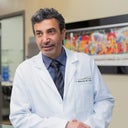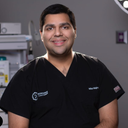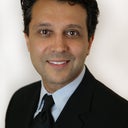What's the difference between an forehead lift and an endoscopic forehead lift? Which one is better?
Answers (46)
From board-certified doctors and trusted medical professionals
Dr. Anil R. Shah, MD

Dr. Anil R. Shah, MD
Board Certified Facial Plastic Surgeon
Answer
Dr. Jonathan Kulbersh, MD

Dr. Jonathan Kulbersh, MD
Board Certified Facial Plastic Surgeon
Answer
Dr. Benjamin Caughlin, MD, FACS

Dr. Benjamin Caughlin, MD, FACS
Board Certified Facial Plastic Surgeon
Answer
Dr. Shahriar Mabourakh, MD, FACS

Dr. Shahriar Mabourakh, MD, FACS
Board Certified Plastic Surgeon
Answer
Dr. Mike Majmundar, MD

Dr. Mike Majmundar, MD
Board Certified Facial Plastic Surgeon
Answer
Dr. James Bonaparte, MD, MSc, FRCSC

Dr. James Bonaparte, MD, MSc, FRCSC
Facial Plastic Surgeon, Certified in Otolaryngology – Head and Neck Surgery
Answer
Dr. Vito C. Quatela, MD

Dr. Vito C. Quatela, MD
Board Certified Facial Plastic Surgeon
Answer
Dr. Christopher Cote, MD

Dr. Christopher Cote, MD
Board Certified Facial Plastic Surgeon
Answer
Dr. Larry S. Nichter, MD, MS, FACS

Dr. Larry S. Nichter, MD, MS, FACS
Board Certified Plastic Surgeon
Answer
Dr. Sam Naficy, MD, FACS

Dr. Sam Naficy, MD, FACS
Board Certified Facial Plastic Surgeon
Answer
More Brow Lift Questions
See all Brow Lift Q&AWE SEND PRETTY
EMAILS
What’s trending? Who’s turning heads? Which TikTok myths need busting? We’ve got you. No fluff, no gatekeeping—just real talk. Get our free, unfiltered newsletter.